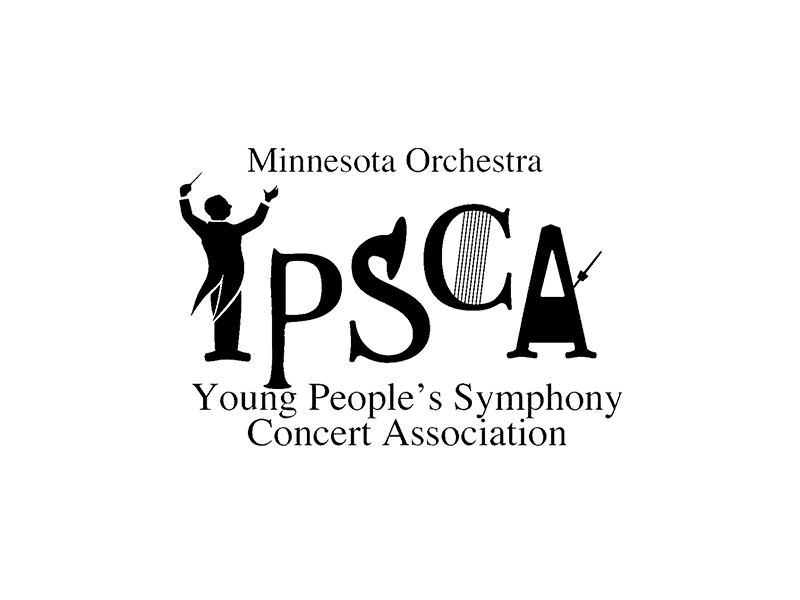
CONCERT ACTIVITIES
Music Around the Globe
Every culture produces distinctive folk music, often born of dance or inspired by nature and stories. The folk music composers hear when they're young often wields a lifelong influence on their craft. This buoyant program offers African American idioms in Florence Price's powerful Third Symphony, tonal painting of the serene Norwegian mountains in Edvard Grieg's Morning Mood and beautiful Syrian folk songs in Kareem Roustom's Aleppo Songs. This program features vibrant selections from Mexican, Chinese, and Hungarian composers, along with Poland's Frédéric Chopin, in a piano concerto starring Nita Qiu, the extraordinarily talented YPSCA Young People’s Concerto Competition winner.
Guide to the Orchestra
See instruments in action, as demonstrated by Minnesota Orchestra musicians.
About the Composers
Huang Ruo was born in 1976 in Hainan Island, China – the year the Chinese Cultural Revolution ended. His father was a composer and began teaching him piano and composition when he was just six years old. When Huang was growing up in the 1980s and 90s, China was opening its gate to the Western world and as a result, his music education at the Shanghai Conservatory of Music included everything from Classical and Baroque composers to The Beatles, heavy metal, and jazz music. Currently, Huang is one of the world’s leading young composers, with his music having been performed by orchestras around the world.
Huang Ruo has a unique style that takes inspiration from Chinese ancient and folk music, Western experimental music, rock and jazz, as well as processed sound and noise. As part of the new generation of Chinese composers, his goal is to integrate Western and Eastern elements into his works, creating cross-genre pieces for all kinds of performances, including for orchestra, theater, film, and many more.
The Girl from Da Ban City from Folk Songs for Orchestra, utilizes folk songs from his native China. While the folk songs are certainly recognizable in the piece, Huang transforms them into beautiful arrangements and uses other melodies and rhythms to add some depth. You will also hear percussion that is meant to invoke the sounds of traditional Chinese instruments, such as tam tams and gongs. nstantly recognizable, many are preserved intact, while others are transformed. He also uses melodies and percussive elements to invoke the sounds of traditional Chinese instruments, such as tam tams and gongs.
Born: 1976, Hainan Island, China
Instrumentation: 3 flutes, 3 oboes, 3 clarinets, 3 bassoons – 3 horns, 3 trumpets, 3 trombones, tuba, percussion, strings
Edvard Grieg was born in 1843 in Bergen, Norway. He began studying piano with his mother at the age of six and studied music at the Leipzig Conservatory in Germany, where he graduated with honors. As he continued his music studies in Copenhagen, Denmark, Grieg felt drawn towards Scandinavian folk music and many of his pieces are inspired by folk songs. At the time his music was first being performed, public perception was very mixed, as his musical style was one very different from much of popular music of the time by composers such as Mozart and Haydn.
Peer Gynt is a play by Henrik Ibsen, written in 1867. Grieg wrote the 26-movement piece of music for this play, which premiered along with the play on February 24th, 1876 in Oslo, Norway. Morning Mood (Morgenstemning in Norwegian) comes at the top of Act IV and is one of 8 movements that Grieg extracted to create the two Peer Gynt suites. Morning Mood is meant to sound exactly as the title states – like a morning mood as the sun rises. As the melody is passed between different instrument sections, the volume steadily builds into a beautiful burst of sound – like a musical sunrise.
Born: June 15, 1843, Bergen, Norway
Died: Sep. 4, 1907, Bergen, Norway
Instrumentation: flutes, oboes, clarinets, bassoons, horns, trumpets, timpani, strings
Syrian-American composer, Kareem Roustom, was born in Damascus and moved to the United States as a teenager. Having already earned a Master’s degree in Electrical Engineering from Northeastern University in 1989, Roustom earned a Bachelor of Arts in Music Business and Music Performance from the University of Massachusetts at Lowell in 1993, continuing on to earn another Master of Arts degree in Ethnomusicology and Composition at Tufts University. Since 2017, Roustom has been teaching orchestration, music notation, music for film scores, and music of the Middle East at Tufts University, where he also directs the university’s Arabic Music Ensemble.
Aleppo is a city in Syria that is well-known for their arts and culture – especially music. Although the Syrian Civil War began in 2011, destroying much of Aleppo’s business and architecture, beautiful music continues to be made in this part of Syria. Roustom wrote Aleppo Songs to share some of Aleppo’s most treasured music in a new setting. How Beautiful the Light of the Rising Sun is based on a melody by Sayed Darwish. The text of this song describes a sunrise over a beautiful, spacious rural landscape that is home to a young man who is awed by the beauty of a young lady.
Born: 1971
Instrumentation: 2 flutes, 2 oboes, English horn, 2 clarinets, 2 bassoons – 2 horns, 2 trumpets, 3 trombones – timpani, percussion, harp, strings
Frédéric Chopin was born in 1810 in Żelazowa Wola, a small village outside of Warsaw, Poland. Chopin was a child prodigy and began playing piano and composing music at an early age. Much of his pieces were written before he left Poland at the age of 20. At 21, Chopin moved to Paris and lived there for the remainder of his life. During his time in Paris, Chopin wrote pieces for solo piano, two piano concertos, and several Polish art songs with piano accompaniment. In addition to composing music, Chopin was a virtuoso pianist, highly regarded as the best of his generation.
Chopin’s second Piano Concerto was composed in the fall of 1829. Although it was designated as “No. 2”, it was actually written before Piano Concerto No. 1! However, it was published second, thus being deemed his second work for piano and orchestra. The piece first premiered in Warsaw, Poland in 1830 with Chopin himself as the piano soloist. The third movement, Allegro vivace, moves quickly while remaining very smooth and lyrical in the piano solo. Containing many fast-paced runs and movement up and down the keys. Listen for the sections where the strings play col legno, or with the wood of their bow.
Born: Mar. 1, 1810, Zelazowa Wola, Duchy of Warsaw (now Poland)
Died: Oct. 17, 1849, Paris, France
Instrumentation: 2 flutes, 2 oboes, 2 clarinets, 2 bassoons, 2 horns, 2 trumpets, trombone, timpani, strings, and solo piano
Hungarian composer, Béla Bartók, was born in Nagyszentmiklós, Hungary (present-day Romania) in 1881 and is widely considered one of Hungary’s greatest composers. A pianist from childhood, Bartók went on to study Piano and Composition at the Royal Academy of Music in Budapest, completing his studies in 1903. Throughout his career as a composer, Bartók’s music was influenced by the work and styles of his fellow composers of the time, including Richard Strauss, Claude Debussy, and Johannes Brahms.
Bartók was an avid collector of folk music and dedicated much of his time to studying it. He was one of the founders of comparative musicology, now called ethnomusicology. Romanian Folk Dances, written in 1915, was originally a suite of six short piano pieces, but later orchestrated by Bartók for orchestra. This piece is based on seven Romanian tunes from the region formerly known as Transylvania (now part of modern-day Romania).
Born: March 25, 1881, Nagyszentmiklós, Hungary
Died: Sep. 26, 1945, New York, United States
Instrumentation: 2 flutes (2nd also piccolo), 2 clarinets, 2 bassoons, 2 horns, strings
Born in 1887 in Little Rock Arkansas, American composer Florence Price was the first African-American woman to be regognized as a symphonic composer, and the first to have a piece played by a major orchestra. Price studied music at the New England Conservatory of Music and was active in the Chicago classical music scene until her death in 1953. Price wrote over 300 works, including symphonies, concertos, choral works, and music for solo instruments.
Price’s Symphony No. 3 in C minor was written in 1938 and was first performed by the Detroit Civic Orchestra in 1940. The third movement, Juba: Allegro, takes inspiration from the Juba (known also as the Hambone), a dance style that includes stomping and body percussion, first made popular by the African American community in the mid and late 19th century. In this movement, you will hear glimpses of African American spirituals and lively syncopated rhythms.
Born: 1887, Little Rock, AR
Died: 1953, Chicago, IL
Instrumentation: 3 flutes, piccolo, 2 oboes, English horn, clarinet, 2 bassoons – 4 horns, 3 trumpets, 3 trombones, tuba – timpani, percussion, harp, strings
Jose Pablo Moncayo García
On top of being one of Mexico’s leading composers of the 20th century, José Pablo Moncayo García was a multi-talented pianist, percussionist, music teacher, and conductor. Known for highlighting his Mexican nationalism in his pieces, Moncayo García was very overt with the symbolism in his pieces, often meant to portray the essence of the national aspirations of Mexico in the 20th century.
Huapango is García’s most well-known work, strongly associated with the nationalist culture of Mexico in the 1930s, so much so that it has been considered the second Mexican National Anthem. Premiering in 1941 by the Symphony Orchestra of Mexico, García himself played piano and percussion during its first performance. This piece is a bright arrangement of popular dances from the area of Veracruz, Mexico. Listen for the syncopated rhythms played by the piano and percussion, as well as the bright, sweeping melodies played by the brass section.
Born: June 29, 1912, Guadalajara, Jalisco, Mexico
Died: June 16, 1958, Mexico City, Mexico
Instrumentation: 3 flutes, piccolo, 2 oboes, 2 clarinets, Eb clarinet, 2 bassoons – 4 horns, 3 trumpets, 3 trombones, tuba – timpani, percussion, harp, strings
Program notes by Jessica Lowry except where noted.
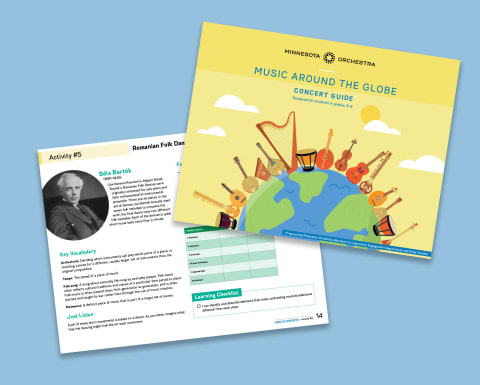
Teacher Activities for Music Around the Globe
Explore our concert guide designed for use in the classroom—including activities, flashcards, and more.
Artists
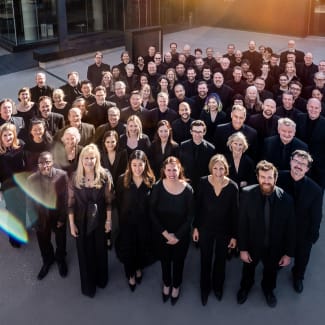
The Grammy Award-winning Minnesota Orchestra, now in its second century, ranks among America’s top symphonic ensembles, with a distinguished history of acclaimed performances in its home state and around the world; award-winning recordings, broadcasts and educational engagement programs; and a commitment to intentionally build concert programs to feature more works by composers of color, exploring music both contemporary and historic. This past fall, Danish conductor Thomas Søndergård began his tenure as music director.
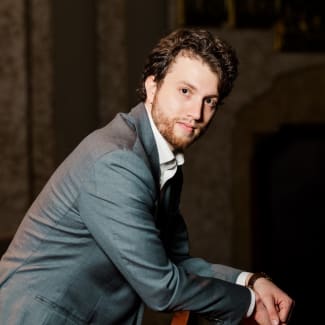
Paraguayan conductor Ernesto Estigarribia Mussi is highly regarded for his versatility and effervescent style on and off the podium. Hailed for his “expert direction” by Fanfare magazine, he is music director of the Sheboygan Symphony Orchestra and the Mankato Symphony Orchestra. In addition, he is the associate conductor of the Quad City Symphony Orchestra, music director of the Quad City Symphony Youth Ensembles and director of orchestras at Augustana College.
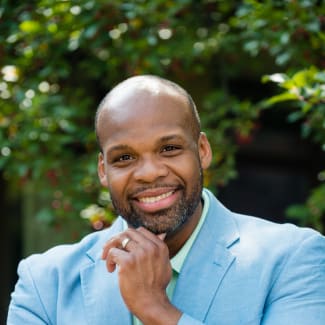
G. Phillip Shoultz, III, who is known for fostering community and inspiring action among people of all ages and abilities, enjoys a multifaceted career as artist, educator, consultant, speaker and pastoral musician. He is the associate artistic director of VocalEssence, where his most visible impact is seen through his visionary leadership as founding conductor of the VocalEssence Singers Of This Age and through his engaging Take 5 with GPS daily livestream and series of instructional videos. He also serves Westwood Lutheran Church as Cantor for Music, Worship and the Arts, and he frequently appears throughout the U.S. as a guest clinician, adjudicator and consultant.
Sponsored By
Thomas* and Mary Lou Detwiler
Mary Ann Feldman Music Education Fund
CORPORATE & INSTITUTIONAL SPONSORS




